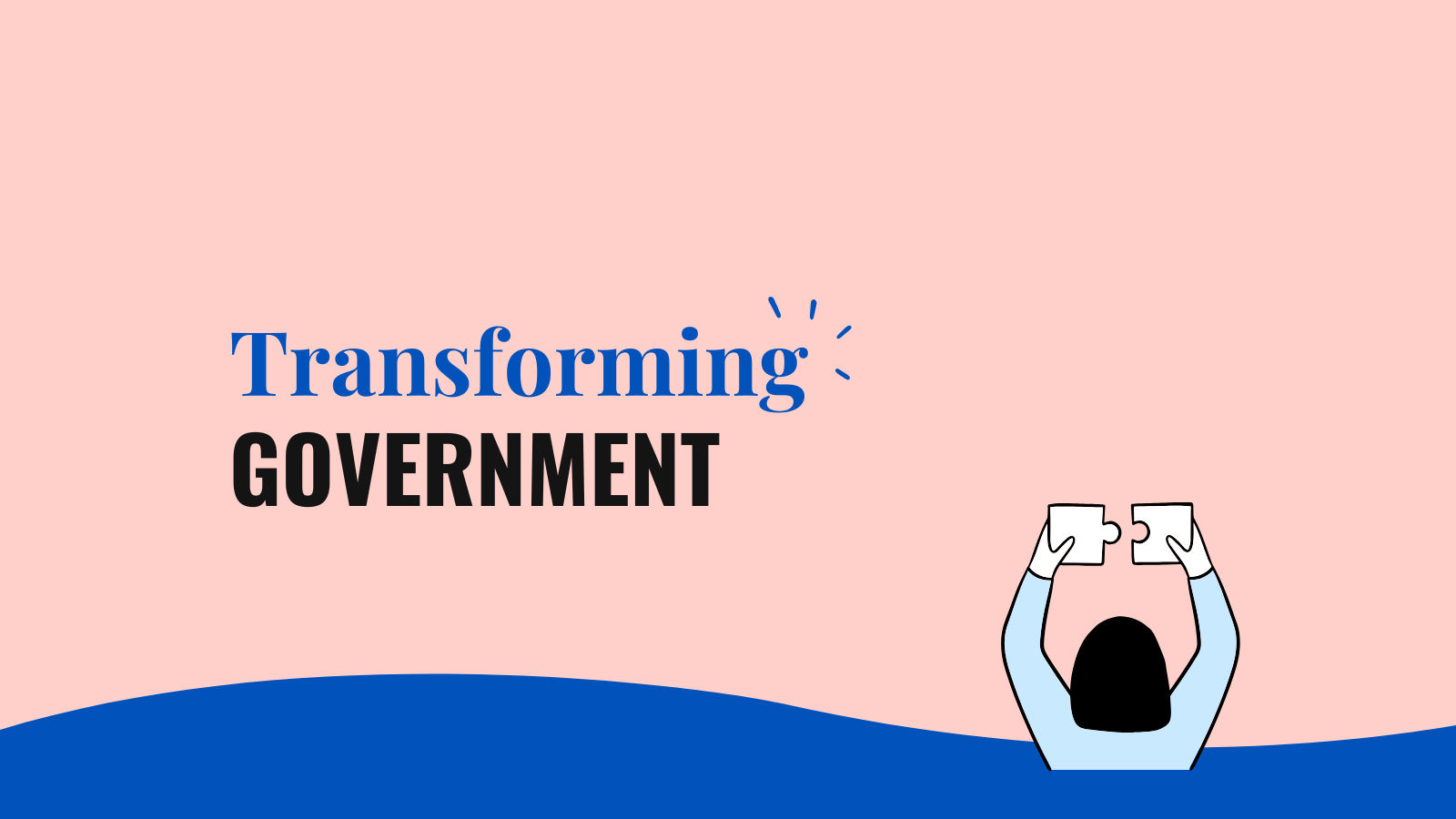The idea that organisations succeed by demonstrating value is not new. However, the way in which we define value in public services and policy — through improved outcomes and better services — provides us with the opportunity to have a brand new outlook.
This is a reset of expectations around how we demonstrate value across public services and programmes. It is bigger than making things cheaper or faster — it is about organisations’ ability to do significantly more.
In the second part of our new book Multiplied, we explore what good value looks like for the public sector, as well as looking at examples of how organisations are delivering new and effective outcomes.
So how exactly should we be measuring value?
Here are four ways we can multiply the value of our public services.
Reimagining value in the public sector
1) Breaking things down — navigating complex systems with service design
Because most services are inherently complex, the need for change requires more than digitising processes or applying new technology to existing problems. In fact, applying short term fixes tends to increase organisational costs or create new problem areas.
Instead, organisations should take a first principles approach of breaking down systems to their most fundamental components.
By doing so, they are able to understand how their services work and then reconfigure them to create more value.
2) Examining the extremes — focusing on diversity and inclusion
The public sector needs to continuously focus on fully inclusive design that is informed by the full range of human experience, from disability and neurodiversity to race and gender. Focusing on diversity and inclusion enables organisations to build solutions that are then accessed and used in the widest range of possible situations.
By looking for new perspectives — simply asking ourselves who might not be included in the work that we do — organisations can create the opportunity to design in a way that improves the standards of products and services, while extending more value to everyone.
This requires constant iteration, but as former principal director of inclusive design at Microsoft Kat Holmes wrote in her book Mismatch, inclusive innovations don’t require reinventing already existing solutions to create new ones, but simply, “applying a new lens to the resources that already exist, and forming new combinations of existing solutions.”
3) Thinking about value throughout, not just upfront
Pursuing outcomes that are customer-centric rather than simply cost-effective is a far better measure of success and value.
Agile delivery is an iterative approach to delivery in which teams build incrementally at the beginning of a project rather than ship it at once upon completion. It is an investment in technology and delivery that’s made over time, but only as the value of ideas and solutions is demonstrated.
Assumptions have to be tested, and iterations made based on real user feedback. And, most importantly, the value of new products or services has to be represented, or measured as the result of change that people can see and experience for themselves.
4) Break it down to see the bigger picture
What overwhelms you or your team the most about a challenge? For each problem, ask yourself: what would happen if you broke it down into different parts?
Looking at things through frameworks — in other words, seeing challenges in smaller parts — is a great way to navigate and communicate complex ideas.
It’s also a great way of rethinking the way systems and services create value. This is because, as writer and designer Jon Kolko explains, frameworks are the perfect way to learn about the most basic parts of a new idea. Frameworks are, by their very nature, “purposefully reductive. [They] take things away, emphasising only a small part of a large whole, so that we can focus only on what remains.”
A wider perspective on value
We’ve considered the ways in which value can be redefined and measured in the public sector. However, organisations seeking to deliver and prioritise value must also set out to distribute that value equally.
As we explore these constructive alternatives for how we produce, distribute and design for the future, it is important that we look beyond the average user needs and requirements. By looking at new perspectives, we can explore more ideas that cater to the full range of human experience. This is a hugely important measure of value that is all too often overlooked.
Find out more about how the public sector can increase the value and impact of its services in our new book Multiplied, available to buy from Amazon and Waterstones. Multiplied explores the new and creative ways in which we can unlock the technology, data and design potential of the public sector, to do more for Britain’s communities.
All profits from the book are being donated to the Association of NHS Charities.

Transforming Government
We partner with the institutions of Government to help them work better. Our approach delivers digital transformation in government that is user-centred, data-led and cost-effective.
Work with usOur recent insights
Transformation is for everyone. We love sharing our thoughts, approaches, learning and research all gained from the work we do.

Designing behavioural change in the attention economy
How strategic design and technology can capture attention, shift behaviours, and deliver meaningful public services in an attention-limited world.
Read more
Where ideas, innovation, and community collide
UK Gov Camp 2025 was an inspiring unconference buzzing with ideas, connections, and collaboration to create positive change in the public sector.
Read more
A game-changing approach to leadership
Radical Leaders: The Game! uses real-world crisis scenarios to challenge local government leaders, fostering collaboration, agility, & community focus.
Read more


